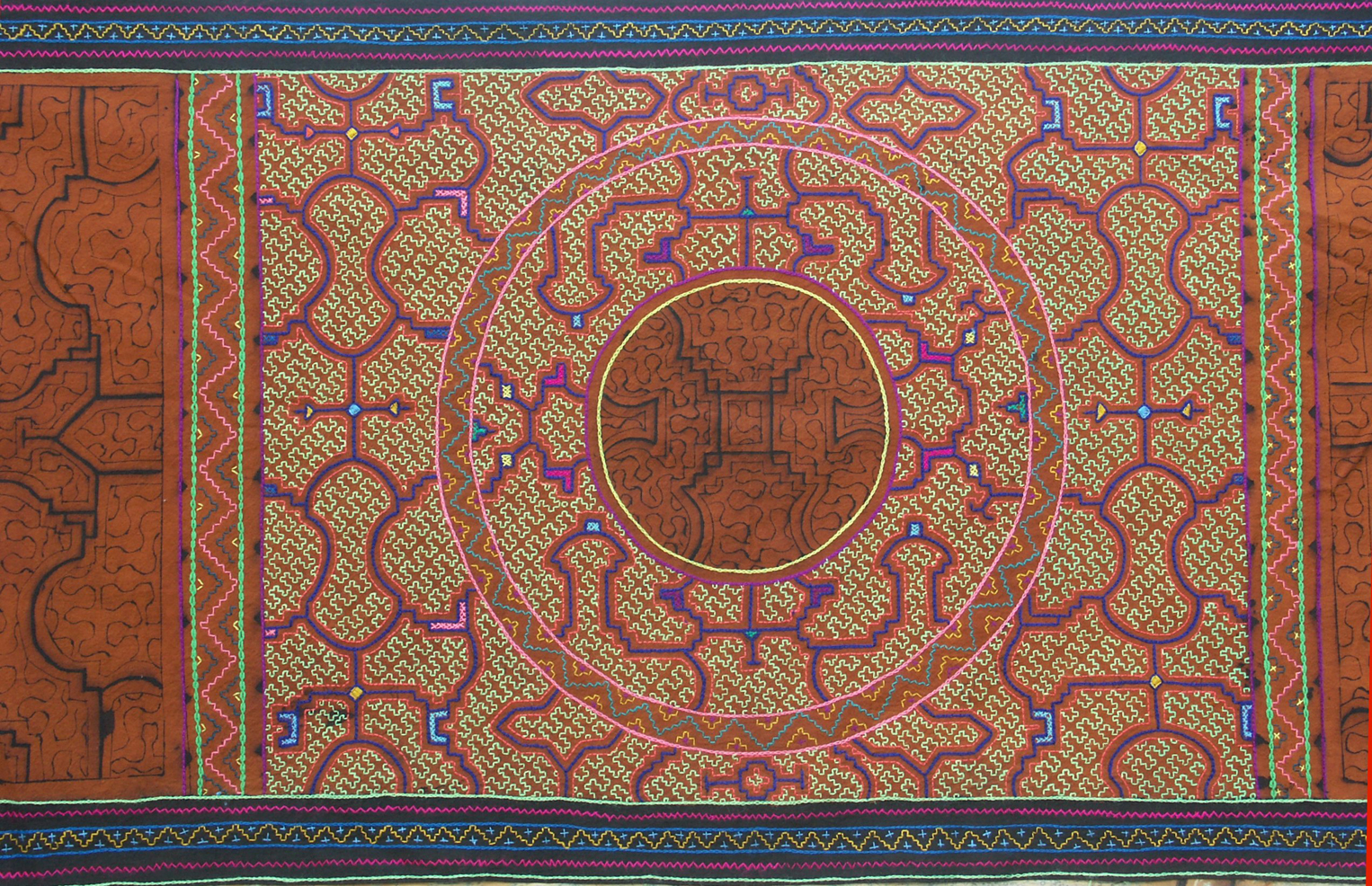Perhaps the most iconic (at least in the Americas) shamanic textiles are those produced by the Shipibo people in Peru. This has been a difficult one for me because there is SO much information available on these textiles and all of it is AMAZING so it's hard to focus on just one thing. But I'll do my best!
Monday, February 27, 2017
Textiles and the Multi-tiered Cosmos: Shipibo Textiles
Perhaps the most iconic (at least in the Americas) shamanic textiles are those produced by the Shipibo people in Peru. This has been a difficult one for me because there is SO much information available on these textiles and all of it is AMAZING so it's hard to focus on just one thing. But I'll do my best!
Thursday, February 23, 2017
Textiles and the Multi-Tiered Cosmos: Indonesian Sarita Cloths
Today I'm going to take a look at sarita cloths of the Toraja people from the upriver region of Sulawesi Island, Indonesia.
I'm interested to see if I can show a connection between this textile
and shamanism. Someone needs to write a dissertation on this. There's so
much here!
Wednesday, February 15, 2017
Textiles and the Multi-Tiered Cosmos
In
order to prove that Textiles are associated with shamanism, my next
task is to show how they are related to the multi-tiered cosmos. So far,
we've seen how weaving itself can be an induction method to altered
states of consciousness (ASC) and how ASC and entoptic images are
precursors to a belief in a multi-tiered cosmos (underworld/this
world/world of spirits), which is the basis of shamanism and (arguably)
all later spiritual practices. We've also seen that entoptic images are
ubiquitous in textiles from all over the world. Some may argue that
since entoptic imagery is a product of the human nervous system, this
does not necessarily indicate that the weavers engaged in any type of
ASC or spiritual activity. And they'd be right! Of particular contention
is the link between shamanism and phosphenes/entoptics. Bednarik points
out that although all humans use phosphenes daily, "that does not make
us shamans!" (Bednarik 1990, 79). But if we can see depictions of a
multi-tiered cosmos (the result of ASC and entoptic experience), we come
that much closer to making an association between textile production
and shamanism.
 |
| Tai Daeng Shaman doing his thing. |
Tuesday, February 14, 2017
Phosphenes, Entoptics, and a Tiered Cosmos
In
the last post I mentioned that altered states of consciousness can
result in the experience of phosphenes or entoptic images. These are
geometric images or flashes of light that arise from the central
nervous system and visual cortex. They are common to all humans (and
possibly other animals). You can experience phosphenes by pressing on
your closed eyelid. You'll see little illuminated squares, dots,
ladders, and other motifs. That's a phosphene! When a phosphene or
entoptic image appears in prehistoric art, it can be argued that the
art is related to altered states of consciousness, trance, shamanism,
or all three. These motifs appear in cave art, megalithic art, and many
other forms of art including textiles.
| Entoptic "floaters" |
Monday, February 13, 2017
Trance and Design Motifs
Tuesday, February 7, 2017
weaver as shaman
There are many textile motifs still in
use today that can be traced back to the first known artworks created
during the Paleolithic period. It has also been suggested that textile
production (weaving) is a sacred act.
Monday, February 6, 2017
The prehistory of textiles: Paleolithic
I
have become seriously obsessed. I get these packages once a month or
so. They're covered in cloth that has been stitched and sealed with wax,
wild stamps, and lots of confusing lettering. I have to rip the cloth
open to get inside, which always seems a shame to me. But I get over the
guilt when the smell of the sari or ikat or suzani wafts out of the
package. It smells like a mysterious far-away closet. When I pull the
fabric out and it floats open in front of me in all its magnificence,
sometimes I actually get tears in my eyes. The dogs think I'm crazy.
Wednesday, February 1, 2017
Aunt Ella, Western Woman!
 |
| Christeen's great great aunties. Aunt Ella is top center. |
Subscribe to:
Comments (Atom)

